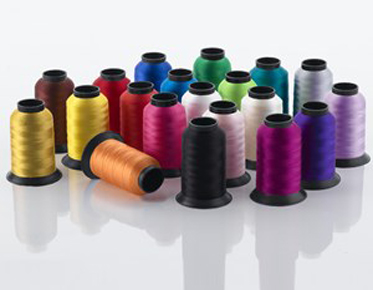Exploring the Art of Appliqué Embroidery: A Detailed Guide
Appliqué embroidery is a versatile and creative technique that has been used for centuries to embellish textiles and add dimension to various projects. Whether you're a seasoned embroiderer or a novice looking to delve into the world of decorative stitching, this comprehensive guide will take you on a journey through the art of appliqué embroidery. We will explore its history, techniques, materials, and provide step-by-step instructions to help you get started on your own appliqué embroidery projects.
Understanding Appliqué Embroidery
Appliqué is a French word that means "applied" or "attached." In the context of embroidery, it refers to the process of attaching small pieces of fabric onto a base fabric to create a decorative design. Appliqué embroidery can be found in various cultures worldwide, each with its unique style and traditions.
History of Appliqué Embroidery
The roots of appliqué embroidery can be traced back to ancient civilizations. For example:
● Egypt: Egyptians used appliqué techniques to decorate garments and textiles
as early as 980 BC.
● China: Chinese silk embroidery, which often features intricate appliqué
designs, dates back over 2,000 years.
● India: Indian textiles are renowned for their vibrant appliqué work, with
regions like Gujarat and Odisha known for their exquisite pieces.
● Hawaii: Hawaiian quilting, which involves appliquéing intricate motifs onto quilts, is a well-known art form.
Appliqué embroidery has also been prominent in European and American quilting traditions, with techniques varying by region and time period.
Types of Appliqué Embroidery
Appliqué embroidery comes in several forms, each with its own characteristics:
Raw-Edge Appliqué
In this method, the fabric pieces are attached to the base fabric with raw edges exposed. It creates a rustic and textured look.
Turned-Edge Appliqué
Here, the raw edges of the fabric pieces are folded under and then stitched onto the base fabric. This results in a neat and polished appearance.
Fusible Appliqué
Fusible webbing or interfacing is used to attach the fabric pieces to the base fabric. Heat is applied to adhere the fabrics together. This method is popular for its ease and speed.
Reverse Appliqué
In reverse appliqué, a shape is cut out of the top fabric to reveal a contrasting fabric beneath it. It's a technique that adds depth and complexity to designs.
Shadow Appliqué
Shadow appliqué involves layering fabric pieces to create a three-dimensional effect, with each layer adding depth and dimension to the design.
Mosaic Appliqué
This technique involves creating a design by piecing together small, irregularly shaped fabric scraps, much like a mosaic.
Materials for Appliqué Embroidery
Before you start your appliqué embroidery journey, it's essential to gather the necessary materials. Here's what you'll need:
Fabric
● Base Fabric: This is the fabric on which you'll create your design. It can be
anything from cotton to linen or even felt, depending on your project.
● Appliqué Fabric: Choose fabrics for your appliqué pieces. Cotton and silk are common choices, but you can experiment with various textures and colors.
Fusible Webbing or Interfacing
(for Fusible Appliqué)
● Fusible webbing is a double-sided adhesive that bonds fabric together when heated.
Embroidery Hoop
● An embroidery hoop helps keep your fabric taut and makes it easier to work on your design.
Embroidery Thread
● Select thread colors that complement your fabric choices and design.
Needles
● Embroidery needles or appliqué needles are ideal for stitching your fabric pieces in place.
Scissors
● Sharp fabric scissors for cutting out your appliqué pieces and trimming excess fabric.
Marking Tools
● Fabric pencils or markers for tracing your design onto the base fabric.
Iron and Ironing Board (for
Fusible Appliqué)
● You'll need these to activate the fusible webbing.
Getting Started with Appliqué Embroidery
Now that you have your materials ready, let's dive into the step-by-step process of creating an appliqué embroidery design:
Design Selection
Choose or create a design that you want to embroider onto your base fabric. Keep in mind the complexity of the design and your skill level, especially if you're a beginner.
Preparing the Fabric
Wash and iron both your base fabric and appliqué fabric to ensure they are clean and wrinkle-free.
Transferring the Design
Transfer your chosen design onto the base fabric using a fabric pencil or marker. You can freehand the design or use a template or stencil.
Cutting the Appliqué Pieces
Carefully cut out the fabric pieces for your appliqué. If you're doing raw-edge appliqué, you can leave the edges as they are. For turned-edge or fusible appliqué, fold the raw edges under and press with an iron.
Positioning and Pinning
Place your appliqué pieces onto the base fabric, following the traced design. Pin them in place to keep them secure while you work.
Stitching
Choose your embroidery thread and begin stitching the appliqué pieces onto the base fabric.
Common stitches for appliqué include:
● Blanket Stitch: This stitch is often used for turned-edge appliqué, creating a neat
border around the fabric pieces.
● Satin Stitch: A satin stitch is used for covering the raw edges of the fabric
pieces, creating a smooth and polished look.
● Running Stitch: A simple running stitch can also be used for attaching the fabric pieces, especially in raw-edge appliqué.
Finishing Touches
Once you've stitched all your appliqué pieces in place, add any additional embroidery or embellishments as desired. This can include decorative stitches, beads, sequins, or other elements to enhance your design.
Final Press
Gently press your finished appliqué embroidery project with an iron to remove any wrinkles and set the stitches.
Tips and Techniques for Successful Appliqué Embroidery
Here are some tips and techniques to help you achieve beautiful and precise appliqué embroidery:
Choose the Right Thread
Select embroidery thread that complements your fabric choices and design. Ensure that the thread color contrasts or matches appropriately to make your appliqué pieces stand out.
Practice Your Stitching
Before starting your main project, practice your chosen stitches on a scrap piece of fabric to get comfortable with the technique and achieve consistent stitch quality.
Experiment with Fabrics
Don't be afraid to experiment with different fabrics, textures, and patterns for your appliqué pieces. Mixing and matching fabrics can create stunning visual effects.
Be Patient with Fusible Appliqué
If you're using fusible webbing, follow the manufacturer's instructions carefully, as ironing times and temperatures can vary. Be patient and avoid rushing this step.
Embrace Imperfections
Appliqué embroidery allows for a certain level of artistic freedom. Embrace imperfections and irregularities in your stitching, as they can add character and charm to your project.
Layer for Depth
Consider using shadow or reverse appliqué techniques to add depth and dimension to your designs. This is especially effective for floral or nature-inspired motifs.
Precision in Cutting
Take your time when cutting out your appliqué pieces. Sharp fabric scissors and careful cutting will result in cleaner edges and a more professional finish.
Secure Edges
For raw-edge appliqué, consider using a fray-check or fabric glue along the edges of your fabric pieces to prevent fraying over time.
Appliqué Embroidery Projects to Explore
Now that you have a grasp of the basics, let's explore some creative appliqué embroidery project ideas to inspire your artistic journey:
Quilts and Wall Hangings
Create beautiful quilts or wall hangings adorned with appliqué designs. This classic appliqué technique is a staple in quilting traditions.
Apparel and Accessories
Add a personal touch to clothing, bags, and accessories with appliqué embroidery. Jazz up a plain t-shirt or tote bag with colorful appliqué motifs.
Home Decor
Embellish pillowcases, table runners, or curtains with appliqué embroidery to elevate your home decor.
Baby and Children's Items
Design adorable baby blankets, onesies, or children's clothing featuring playful appliqué characters and shapes.
Personalized Gifts
Craft personalized gifts for loved ones by incorporating their names or initials into appliqué designs.
Conclusion
Appliqué embroidery is a delightful and rewarding craft that allows you to blend fabrics, colors, and stitches to create stunning works of art. Whether you're a seasoned embroiderer or a beginner, appliqué offers endless creative possibilities. From intricate quilts to charming baby clothes, the art of appliqué embroidery can add a touch of elegance and whimsy to a wide range of projects.
As you embark on your appliqué embroidery
journey, remember that practice makes perfect. Don't be discouraged by early
attempts; instead, embrace the learning process and let your creativity
flourish. With patience, precision, and a love for stitching, you'll soon find yourself creating exquisite appliqué
masterpieces that captivate the eye and warm the heart. Happy embroidering!



